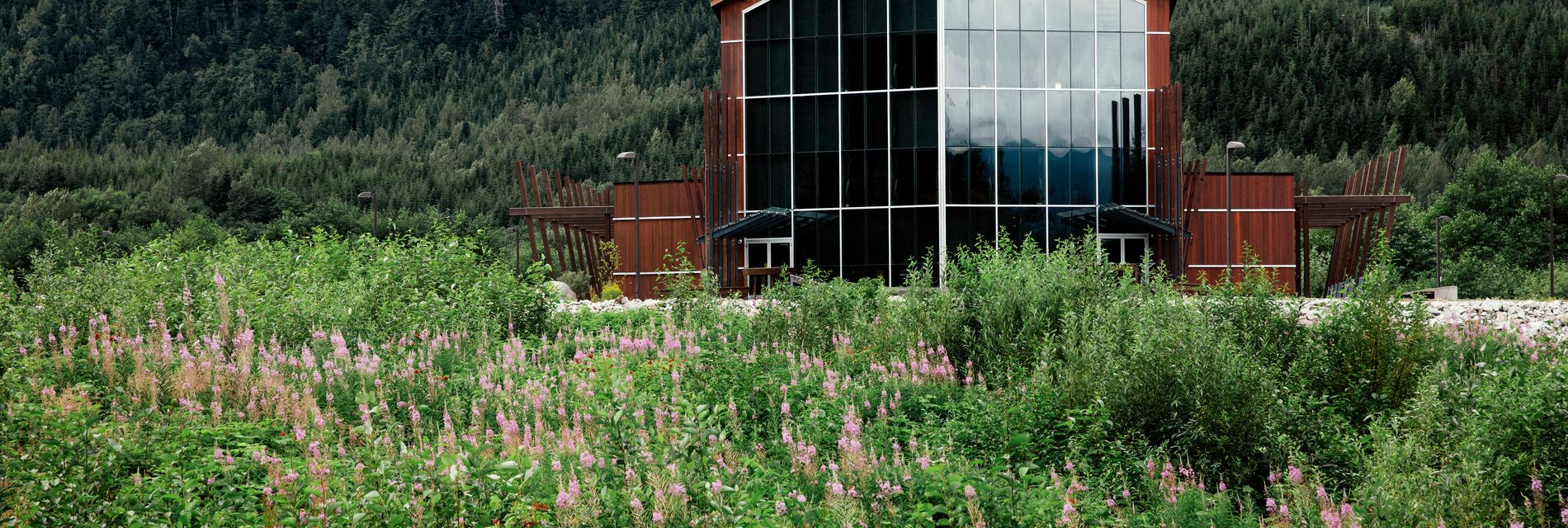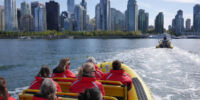Top Tips for a Successful Photo or Video Shoot

Top Tips for a Successful Photo or Video Shoot
Planning a photography or video shoot can be a time and resource-intensive endeavour; but, with extra care put towards a few key steps in the process, you can get a great return on your effort. The Destination BC team has compiled our top tips to help you navigate the shoot planning and production process below:
Please note: A video-version of this article can be found at the bottom of the page.
1. Focus your efforts
It can be tempting to try to cover all of your needs with a single shoot, or to define your needs at too high a level (i.e. “restaurant shots”). However, you’ll likely get a better outcome if you give your photographer or production team a clear focus by creating a list of the specific shots you hope to capture at the arranged location(s). When building your shot list, consider the following:
- What gaps do you have in your current collection? Conduct an audit of your existing photography and footage to identify where you have gaps or where current content is out of date.
- What kind of imagery or video is performing best with your target audience? Talk to your marketing team or agency for insights.
- What are the “must-have” shots, and what are “nice to have”? This will give your production team the ability to focus their time on the ground on the highest-priority items.
- Are there any shots you want the production team to avoid? Maybe you have them well-covered already, or they are overdone in tourism marketing (i.e. the “cheers” cliché, or the “single person looking out over a cliff” shot). You may also want to give your production team direction on the type of responsible travel behaviour you want to depict (i.e. models must wear PFDs when on water, or must stay on designated paths when hiking).

Tip: Take a look at Destination BC’s content checklist for more info on responsible and safe travel visuals.

Tip: In addition to a shot list, you can create a “mood board” using photos that depict the style you want the team or production company to emulate.
2. Find the right supplier(s)
Here in BC, we’re lucky to have access to an incredibly talented and diverse pool of content creators. Each photographer or videographer will bring a unique perspective to your experiences and products—and the strongest ones will act as a creative partner for you to help you bring your brand to life through compelling visuals. While there are benefits to working with the same suppliers who are familiar with your brand and product, there are also benefits to seeking out fresh perspectives and creative approaches.
- Where to start? If you don’t already have a list of local suppliers developed, reach out to your tourism partners (i.e. CDMOs, RDMOs, or DBC) to see if they have suggestions. If you have time, you can do your own research—Instagram is a great channel to seek out photographers from all backgrounds and experience levels—or try doing a call-out on your social media channels.
- An important consideration when selecting a supplier is whether you expect them to manage the logistical planning for your shoot (e.g. reaching out to business owners on your behalf to arrange shoot schedules, or working with BC Parks to secure filming permits). If so, we recommend engaging with someone who has demonstrated experience with this specific skill set. Asking for references from past clients can be a helpful way to evaluate a photographer or videographer’s professional experience.
- Consider both subject matter and style when selecting your supplier(s); are you primarily shooting landscapes, or are you capturing more experiential or emotive shots of people? This may impact whether you select a photographer who’s experienced with landscape photography, or has more of a lifestyle approach. Is the photographer’s or videographer’s style a good match for your brand? Consider asking them to share a selection of their work that they believe best aligns with your brand as part of your decision-making process.
3. Define your usage rights
Think about how and for how long the materials will be used, and what channels or markets they will be used in; these elements can impact the quote you’ll get from your supplier. We recommend seeking third-party usage rights in perpetuity for the images if budget allows, as that will allow you to grant usage to others (i.e. third parties), such as businesses in your community, sector associations, media publications, or Destination BC.
If budget is a concern, you can try negotiating a shorter usage window, or usage rights for specific channels only (like digital). It’s often more cost effective to negotiate third-party rights for your organization from a supplier before the shoot, than to go back to them each time you want to add another party to the usage terms. Destination BC can share suggested usage rights language to ensure we and other partners are also able to use the materials in future to promote your destination or experience. Contact [email protected] for more information.
4. Consider your models
While identifying subject matter and locations is critical, it’s also important to consider who will be in front of the camera experiencing your destination or business. If you are not capturing an editorial-style story where there’s a narrative arc with a lead character, you or your production team wil likely be hiring models to “star” in your visuals. Your chosen production supplier can often help you to source models, provided you identify that need up front and build it into the project timeline.
- We can all share what is beautiful about our province—the places and the people—with the rest of the world. Key considerations when thinking about your shoot are diversity, equity, and inclusion. From content creators to models of diverse abilities and backgrounds, much can be done to reflect and celebrate the diversity of British Columbia. We suggest discussing this up front with your production suppliers to ensure that a greater variety of BC’s people and cultures are reflected in your visuals.
- Ensure you build costs for compensation for models into your shoot budget, and that you ask models to sign a release form that outlines how the images they appear in may be used in the future (even if they are friends/family of the production team).
- Also, consider providing your production team with guidance on wardrobe; sometimes the difference between a good and a great shot can be as simple as removing a distracting patterned jacket or bright running shoes!

Tip: Use Destination BC’s consent & release form instead of, or in addition to, your own to allow usage for DBC and other tourism partners.
5. Think about formats
Shoots are often initiated in support of a specific campaign or marketing initiative. In addition to considering the photo and video needs for those specific uses, also consider what materials you might need to extend the story or visuals into all of your channels. Do you also need vertical video so that your social media team or marketing agency can create Instagram or AMP stories? Do you need “behind the scenes” footage to use on your corporate social media accounts? Holding a quick brainstorming session with your team or agency during the shoot planning period can help to identify opportunities to extend the life of your new visuals. You can then proactively build these deliverables into the contract with your supplier.
You will also want to give your production supplier guidance on what format(s) you’d like the final materials delivered in. Here are DBC’s recommendations:
Video:
- B-Roll: Rendered selects in ProRes format (with LUT applied) and corresponding raw files delivered via hard drive
- Converted clips for upload to the DAM: H265 in the best possible quality (your supplier can batch convert all of the ProRes files to expedite this)
- Final/Edited videos: Provide high quality ProRes or H265 files
Photography:
- High-res, 8-bit TIFF files for all assets
- We suggest asking for a mix of horizontal and vertical images
6. Create a contract
It’s important to put a written agreement in place with your supplier to ensure that you are aligned on the terms of the work they will be doing for you. This critical step can help you to avoid relationship issues or even legal challenges in the future. The contract should clearly outline deliverables, payment, and usage rights for the resulting imagery. You may want to consider including a requirement for insurance on the part of the supplier as well.

Tip: If your agreement includes a specific number of photographs, consider pre-negotiating a set price for purchasing additional shots in the future.
7. Don’t skip pre-production
Taking the time to talk through the goals, creative vision, and logistics of the shoot with your production team before the shoot starts will result in stronger alignment, more clarity for the team on the ground, and a better outcome for you as the client. We recommend planning for at least two check-ins with your production team before the shoot begins: One, for you to provide a creative briefing to share your vision for the material—but also to get their creative perspective. Second, a pre-production session when you are focused on finalizing any logistical considerations, from locations to model wardrobe to contingency plans for inclement weather. Ideally, you’ll create a project brief, so all details and expectations are documented.
Also, we strongly recommend that you speak with your production crew about their COVID-19 shoot protocols before the shoot begins; they should be able to clearly outline the steps they take on the ground during a shoot to keep everyone involved safe and to ensure they can answer any questions should they be approached on the ground by members of your community.

Tip: Use Destination BC’s creative brief template and Super, Natural BC brand guidelines as a starting point for your creative briefing.
8. Be prepared on the ground
Ensure you set your production team up for success with the following tips:
- Create an itinerary that includes key contact information for businesses they’ll be visiting, so that they can call ahead if they’re running late or if plans change due to unexpected events.
- If your shoot is primarily taking place outdoors, consider having a backup plan for inclement weather.
- Ensure your production team has plenty of extra model releases on hand to get sign-off from tourism business staff or members of the public who may be included in shots.
9. That’s a wrap!—but don’t forget to debrief
On-location shoots are dynamic projects with many shifting elements; you will likely generate some key learnings from your project that you will want to apply to future projects. Take the time to debrief with your production team to discuss what worked, what was a challenge, and what you may want to do differently next time.
10. Share your new visuals with your BC tourism partners via the BC Content Hub
A simple and effective way to extend the ROI of your content creation investment and increase reach and exposure for your destination or experience is to share your new visual assets with others in the BC tourism industry via Destination BC’s shared Digital Asset Management (DAM) system, the BC Content Hub. Provided you have secured third-party usage rights from your supplier, and all recognizable individuals in the images have signed Destination BC’s Consent & Release Form, you can submit your visuals in order to give Destination BC and others who promote tourism in BC (such as Destination Canada, regional DMOs, sector associations, and global travel media and travel trade) the ability to use your visuals in their marketing activities.
For more information on how to submit your visuals, please contact [email protected]
Watch a video-version of this article:





